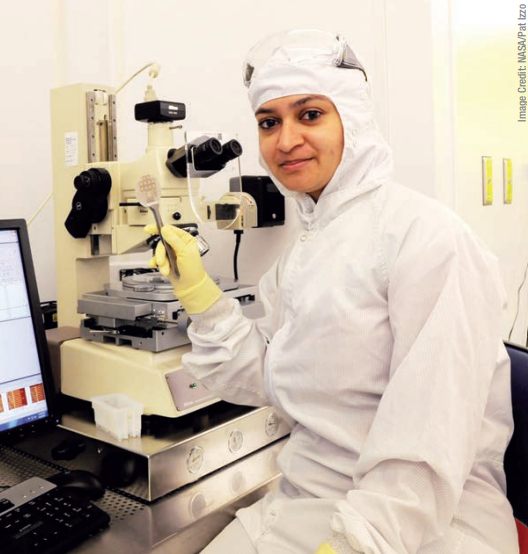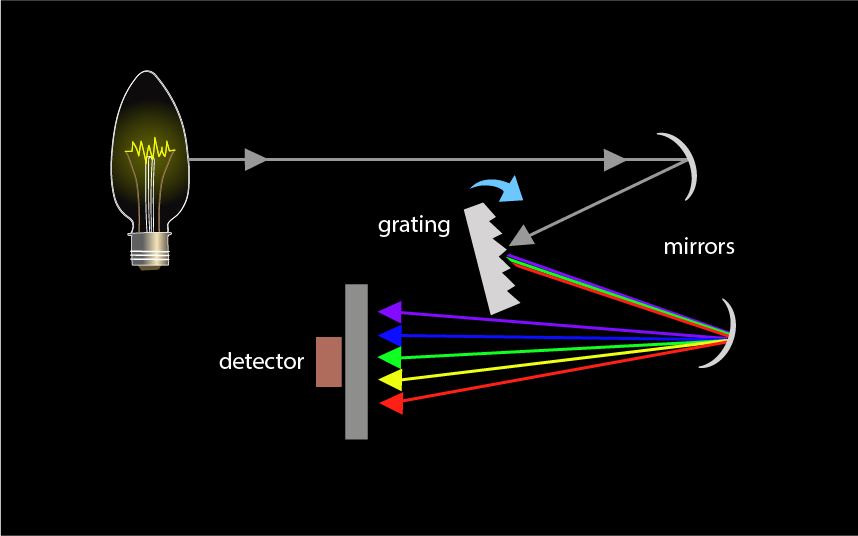Miniaturizing our measurement devices has become more important over the years as our missions needed an increasing number of spacecraft to enable systems science. Launching many spacecrafts at once, affordably means smaller spacecraft and less room for our instruments.

Mahmooda Sultana, a Heliophysics Instrument Development for Science (H-TIDeS) principal investigator, has taken a novel approach to solving this problem for spectrometers by developing a new quantum dots-based spectrometer.
The conventional approach to spectroscopy uses gratings or prisms to split up the incoming light into a rainbow. Each wavelength ends up on a different part of a pixelated detector such as a CCD, and the spectrum of the light can be measured. The downside to this approach is that the light must travel long distances to allow it to spread out.
The higher the spectral resolution needed, the longer the distance. Mirrors are typically used to bounce light around in a small space, but each mirror reduces the amount of light that make it to the detector. If only there was a way to remove the need to split the light up before it reaches the detector and have the detector itself measure each part of the spectrum.

Sultana has been investigating how to do exactly that by placing quantum dots in front of her detectors. Quantum dots are nanometer-sized crystals of semiconducting material. They are so small that electrons inside of them behave like those in atoms, which means that they absorb and emit light in precise and known ways. The advantage of quantum dots is that you can tune them by changing their size, shape, and chemical composition.
Sultana has been developing techniques to create arrays of different quantum dots, which can be placed in front of a detector to create a quantum dot spectrometer. Each pixel of the detector will then see a different part of the spectrum as if a grating or prism was present. In fact, this approach can go beyond the traditional approach: a quantum spectrometer could perform infrared, visible, and ultraviolet spectroscopy all at the same time on a single detector.

This project is one of many that HPD is funding to miniaturize our sensors and enable new missions that produce breakthrough science. One mission that Sultana has been considering is a constellation of satellites observing Earth’s aurora. It would also be useful to observe the solar spectrum to better understand the energy that drives our ionosphere.
For more information read Quantum Dots enable Spacecraft-as-Sensor Concept, or contact Mahmooda Sultana, at mahmooda.sultana@nasa.gov
